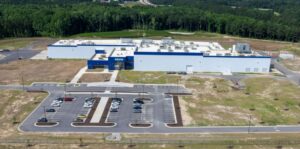Last week hyper-local weather data service Understory raised $7.5 million in Series A funding in a round led by Monsanto Growth Ventures, and early stage venture firm 4490 Ventures.
The investment from Monsanto is set to take Understory in a new direction; it has focused on providing data to insurance companies in cities until now.
“Monsanto is really opening multiple avenues for us inside the agriculture market and will help us to test exactly how weather data can really help farmers,” Understory founder and CEO Alex Kubicek told AgFunderNews.
Understory promises a new type of weather data as its sensors analyze conditions directly at the earth’s surface, compared to traditional, radar-enabled weather stations which collect data from the atmosphere. It argues that this “ground-truth-based detection” leads to better real-time and hyperlocal insights into weather conditions, particularly in the aftermath of a storm. The company is named after the area in a rainforest under the canopy.
Since launching in 2012, Understory has deployed hundreds of sensors across the cities of Boston, Dallas and Kansas City to provide insurance companies with localized weather data. These sensors are installed every two to four miles within the cities to measure how weather effects businesses on the ground.
“We can track how the weather is affecting different buildings and, therefore, help insurance companies understand how badly damaged buildings are so they can contact policyholders before issues arise,” said Kubicek. “This can really streamline the experience for the insurance company.”
Understory chose to focus on the insurance sector because it was a good way to add value immediately, according to Kubicek.
“If you look at what it takes to make a successful weather company, you need a national footprint. By offering services to insurers on a city-specific basis, it enabled us to enter the market without the nationwide deployment of our sensors.”
Now with Monsanto’s strategic investment, Understory is going to turn its attention to agriculture for the first time, but it’s unclear yet how this will be sold into the market.
“Understory is providing a universal sensor that measures all the aspects of weather that are important to growers and can help them make better decisions through their layered data products,” said Kiersten Stead, venture principal at Monsanto Growth Ventures. “In addition, the device has no external moving parts, and will last for years in the field with minimal maintenance. This aspect has been missing from other solutions. Understory will be expanding and filling in the gaps in global weather data.”
While it’s unlikely sensors will need to be deployed every two to four miles across agricultural land like they are in cities, the sensors are so low-cost that the need for mass deployment is not a concern, according to Kubicek.
“We can deploy sensors across an entire city for the same cost that one government weather sensor would be,” he said. Taking advantage of the hardware revolution, where the boom in smartphones made the cost of several components a lot cheaper, Understory is using these “commoditized components” to build its sensors. The low manufacturing cost means this latest round of funding gives the company a runway of about two years, according to Kubicek.
Understory will move its headquarters from Boston to Madison, Wisconsin where many of its investors are based — this round also attracted CSA Partners as a new investor — and to be closer to one of the US’s biggest agriculture regions.
Existing shareholders that increased their commitment were True Ventures, RRE Ventures, and SK Ventures.
Kubicek just graduated with a masters in atmospheric science. While he was studying cloud micro physics and how particles inside a thunderstorm cause it to grow and shrink, he noticed how little data there was on the ground for his needs. He therefore decided to create Understory out of “a selfish desire for weather data”.
Have news or tips? Email [email protected]




